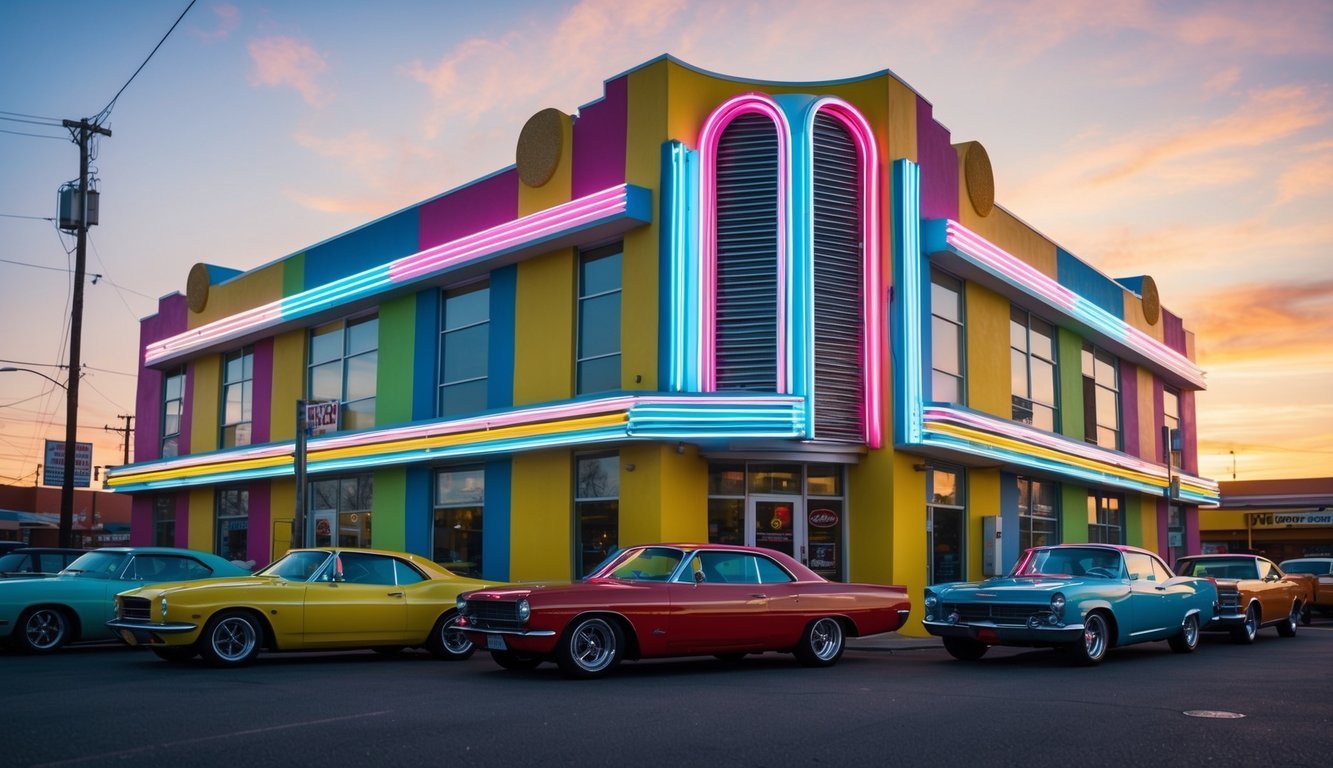If you’ve taken a moment to admire the striking designs of roadside establishments, you may have unwittingly encountered Googie architecture.
This vibrant style is characterized by features such as cantilevered roofs, bold angles, sweeping curves, large plate glass windows, playful starburst motifs, vivid colors, and eye-catching neon lights.
Born from the cultural landscape of mid-20th century Los Angeles, Googie became a favorite among a new generation of motorists eager to explore the city.
As America transitioned into the post-war economic boom, Googie spread its wings, transforming into a nationwide phenomenon.
The Origins of Googie Architecture
The term “Googie” derives from a legendary café designed by architect John Lautner known as Googies, nestled at the bustling intersection of Sunset Boulevard and Crescent Heights in West Hollywood.
This modern café attracted a plethora of celebrity patrons, from Marilyn Monroe to Dennis Hopper, solidifying its role in Hollywood lore.
Interestingly, despite facing criticism for its audacious and unconventional style, these critiques inadvertently fueled the popularity of the term “Googie,” proving that a bit of controversy can ignite meaningful conversation.
Los Angeles was the perfect canvas for the Googie movement.
The dramatic elements of this style were deliberately designed to capture the attention of drivers cruising by.
Bright lights and captivating signage articulated the essence of each business instantly.
Iconic examples, such as the towering cowboy hat sign of Arby’s on Sunset Boulevard, perfectly illustrate this whimsical architecture.
It’s evident that LA’s enduring love for cars played a vital role in nurturing Googie’s dynamic and spirited character.
Futuristic Influences and Cultural Resonance
Amid the excitement surrounding the space race, Googie architecture took a decidedly futuristic turn.
With its cantilevered forms and designs that evoked visions of flying saucers and rockets, it resonated with the optimistic cultural wave of the time.
Influenced by atomic shapes and vibrant starbursts, mid-century modern aesthetics mirrored the fervor of the era, much like the animated family in “The Jetsons” with its buildings inspired by the Seattle Space Needle.
The exuberance of that time aligned seamlessly with the adventurous designs of Googie architecture.
Though trends can fade like the colors of a setting sun, Googie architecture stands at a fascinating crossroads.
While some of these playful structures have succumbed to the demands of modern design, many still remain, serving as nostalgic reminders of a remarkable period.
Particularly in Los Angeles, these Googie treasures continue to stand proud, defying the constraints of time with their undeniable charm.
Take, for instance, the iconic McDonald’s in Downey, lovingly preserving its original 1953 Googie design thanks to passionate architecture advocates.
The landmark Arby’s cowboy hat, a familiar sight for locals and tourists adventuring along Sunset Boulevard, remains untouched, a testament to the community’s fondness for its quirky past.
When visitors arrive at Los Angeles International Airport, they’re greeted by the whimsical Theme Building, resembling a UFO and inviting wonder from the first glance.
The beloved Pann’s Diner, an early Googie treasure along La Tijera Boulevard, has captivated generations, while Bob’s Big Boy Broiler in Burbank, dating back to 1949, is still a favorite gathering place for car enthusiasts and nostalgic souls.
The Lasting Legacy of Googie
Whether you see these quirky, unforgettable structures as vital pieces of architectural history or as joyous expressions of creativity, their influence on both American and global culture is significant.
As a proud Angeleno, I find joy in these architectural gems, taking their existence in our car-centric city for granted.
If anything, I believe the world could benefit from more vibrant, imaginative designs rather than stark, uninspiring spaces.
Celebrating the joyful essence of Googie architecture allows us to honor the creativity that defined an era and continues to inspire us today.


